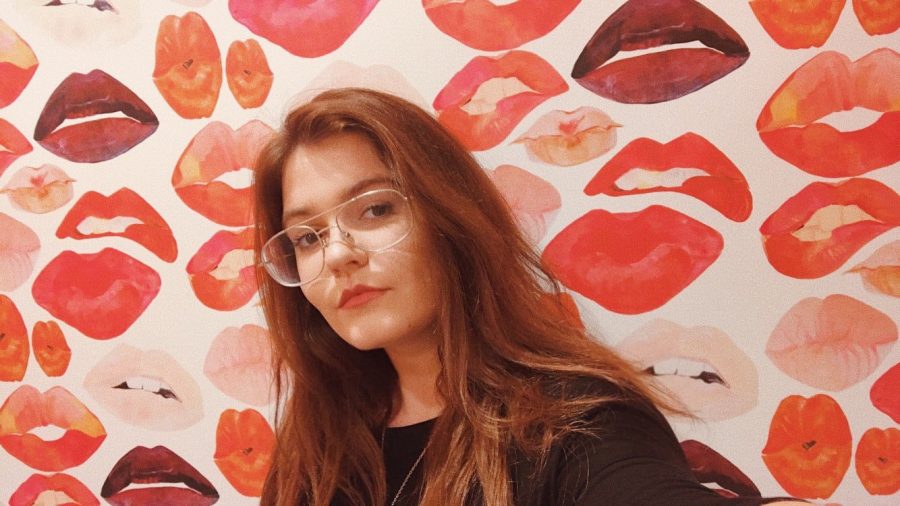Living With Juvenile Diabetes
Averil Gleason’s life changed forever at just 6 years old.
Gleason in New Orleans.
January 14, 2019
Many people often think of overweight when they hear the word diabetes, but little do people know that there is a big difference between the two. More than four million people worldwide suffer from type two diabetes, and 30,000 people a year are diagnosed with type one diabetes. Type one diabetes, also known as Juvenile Diabetes, is a condition that you’re born with and later diagnosed. Juvenile Diabetes is when the pancreas doesn’t produce any insulin. Side effects of type one diabetes are excessive weight loss, extreme thirst, wetting the bed, vomiting, and sweating.
Averil Gleason was diagnosed with Juvenile Diabetes when she was just six years old. She is now 24 years old, graduated from Stephen F. Austin University, and is working at The Fort Bend Herald.
Gleason had to change her ways of living at such a young age. There was no coming home from school and consuming a bunch of sweets like most kids got to.
”Living with diabetes as a child was hard. No more sodas and cookies and candy. I had a very structured diet. But my friends and family made my new lifestyle seem normal. Yeah, I have to watch how many carbs I intake, but that doesn’t mean I’m put in a box,” Gleason said.
After eighteen years of living with Diabetes, one can get so used to it that it’s not even thought about.
”I’m still not used to having diabetes. I have good days and bad days. Besides checking my blood and giving myself shots, I often forget I’m diabetic. Until my blood sugar plummets or skyrockets. Then, I go into panic mode. I need insulin or juice or something to regulate my numbers. I don’t think I will ever get used to it,” Gleason said.
Most people believe that when someone is diagnosed with Diabetes that they have to completely change their eating habits, but that’s not always true for people with Juvenile Diabetes.
”I was able to eat the same things but in a condensed manner,” Gleason said.
Managing a diabetic’s blood sugar can be extremely difficult because not just food can cause your blood sugar to go up and down but also stress. Controlling one’s stress is challenging especially as a young adult.
”I really have to be on top of the things I eat so I can give myself the correct amount of insulin. But even when I do that, sometimes stress or excitement or anxiety will mess with my blood sugars,” Gleason said.
Growing up with Diabetes at such a young age can be difficult, because one doesn’t always know when their blood sugar is dropping or rising throughout the day, but thanks to Gleason’ Parents they’ll know when something’s wrong before she does.
”My mom and dad always had juice boxes on them in case of emergencies,” Gleason said.
When meeting new people, Gleason is afraid of what people will think when they hear that she is Diabetic so she doesn’t feel comfortable telling people right away,
There are a couple different ways that you can manage diabetes such as the pump and the needle.
”I use Humalog pens for fast-acting insulin and Lantus pens for my nightly shot,” Gleason said.
After years of going back and forth from the pump to needles, Gleason now knows which one she prefers.
”I like using needles better. The pump does give me a little more freedom but it’s harder to handle day-to-day,” Gleason said.
Knowing when to inject insulin is something you can’t ever forget to do or your blood sugar can change drastically.
“I inject every time I eat carbs and every night before bed,” Gleason said.
Recognizing the symptoms of high or low blood sugar is something that one has to develop over time from experience.
”I’ve had diabetes for 17 years. I can tell almost immediately when my blood sugar drops or gets high,” Gleason said.
The symptoms of Diabetes can be different for many people, but it’s important to know the symptoms if something bad were to happen.
” I get shaky and feel light headed and get annoyed really easily when I’m low and when I’m high I get really thirsty and have to use the restroom a lot,” Gleason said.
There can be many difficult times in one’s life when living with diabetes.
”The hardest part about being diabetic is knowing that there are no days off. Yeah, I can manage it, and yeah, I know how many carbs are in almost every food, but what I would give to be normal for a day. To not have to check my blood or take a shot when I eat. To live, carefree,” Gleason said.
Being diabetic is always the worst thing in one’s life it can really change someone’s life for the better.
”The best part of being diabetic is using it as an excuse to get out of doing something hard. I mainly did that in high school and college when I didn’t study for a test,” Gleason said.
Diabetes can also cause Gleason to not be as athletic as she wants to be.
“Sometimes my blood sugars hinder me from being able to be super active,” Gleason said.
Not everyone is educated on Juvenile Diabetes many people just assume that there is only one kind.
”There is a common misconception that people have about diabetes. There are two types of diabetes: type one, or juvenile diabetes, and type two, or adult-onset diabetes. While the two types sound similar because of their names and because both types affect the pancreas, they are otherwise totally different. There is no known reason on God’s green earth as to why my pancreas stopped producing insulin. It just did. However, maintaining a healthy lifestyle and weight, eating sensibly and exercising regularly can prevent type two adult onset diabetes. In other words, the less sugar the better. On the other hand, juvenile diabetics need sugar to survive. If I exercise just a little too hard or give myself a little too much insulin, my blood sugar drops and the only thing that can bring it up is a juice box and a spoonful of peanut butter. By raising awareness of juvenile diabetes, I can help remove the burden of this disease. I have calluses on my fingers from checking my blood sugar so often and my stomach, legs and arms are covered in scars from the thousands of insulin shots I’ve given myself. Fifteen years ago my life changed forever, but I know I wouldn’t have gotten this disease if God didn’t think I could handle it,” Gleason said.




